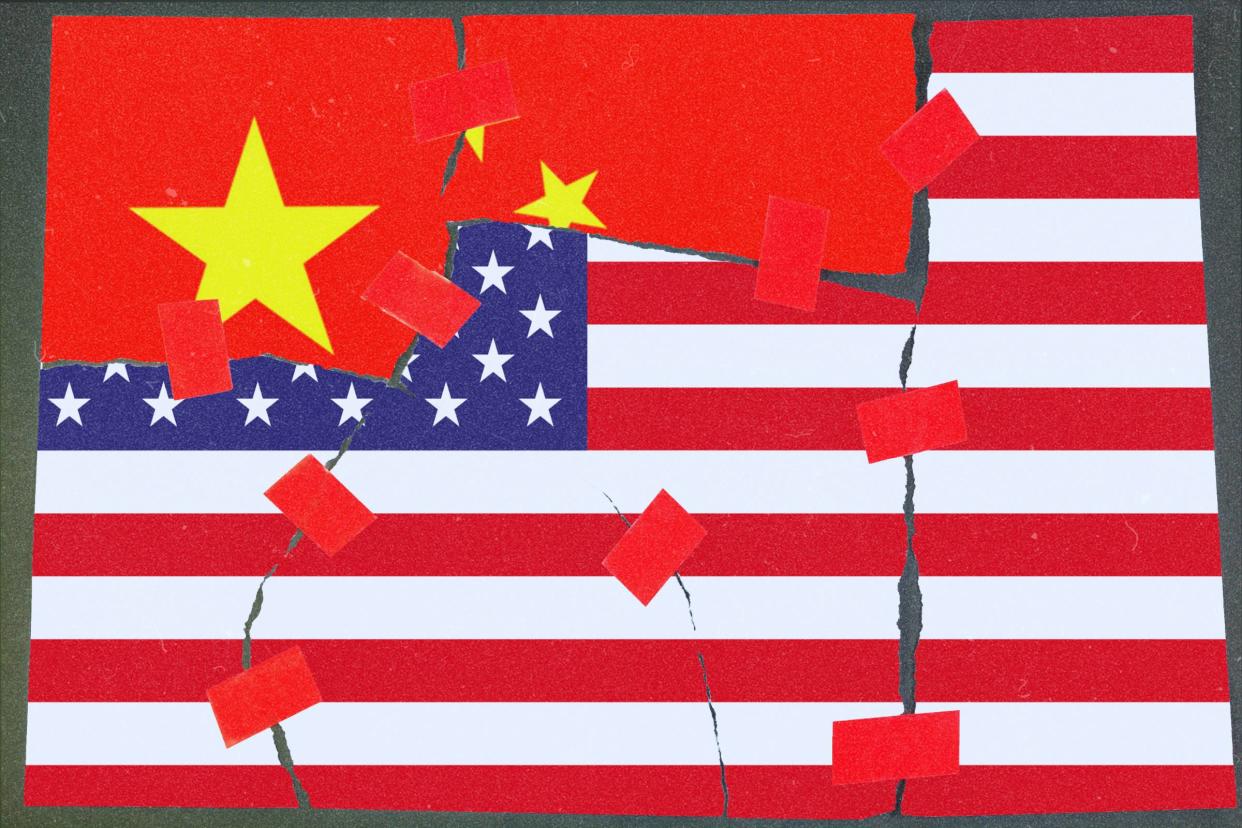How the U.S. Can Win the New Cold War

Credit - Photo-Illustration by TIME; Getty Images (3)
Both President Joe Biden and Xi Jinping strongly reject the current U.S.-China competition as a new Cold War. As recently as September, Biden said that he doesn’t “want to contain China” and that “we’re all better off if China does well.” Xi, in turn, proclaimed that “China doesn’t want a cold war or a hot war with anyone,” following a meeting between the two in San Francisco in November. Yet these pronouncements aren’t all that sincere.
Today there are striking and troubling similarities between our current moment and the original Cold War between the U.S. and Soviet Union that defined the second half of the 20th century. Once again, the world is witnessing two major powers engaged in a global competition for supremacy, trying to lock in an economic, technological, diplomatic, and military advantage anywhere and everywhere an opportunity presents itself. Virtually every region of the planet is a battlefield for this confrontation: from the scramble to secure mining rights for critical minerals and advantageous trade deals in Africa and Latin America, to the establishment of economic and military partnerships across Asia, to backing opposite warring sides in Europe and the Middle East.
And just as in the 20th century, the last two decades have witnessed a dangerous conventional and nuclear arms race, with China engaging in rapid build up and modernization of their nuclear, naval, air, ground, and rocket forces. In an unmistakable nod to the Space Race of the 1960s, this contest is also playing out beyond Earth, with both countries racing to once again place a human on the moon and later Mars in the coming decade. Finally, the coldness of the Cold War was defined most of all on a daily basis by the secret espionage war. And, indeed, today once again America is confronted with an espionage threat against its government and industry on a scale hereto not seen.
The current era is not identical to the prior Cold War. That is most clear in the deep economic interdependence between China and the U.S. But, when looking at the facts, it’s impossible to call it anything but Cold War II.
In Cold War II, both China and the U.S. believe that the two countries are here to stay. There are some in America who believe that the CCP may eventually collapse, but few are counting on that outcome or can do anything to make it happen. Their current goals are not destruction of each other’s systems but a competition for influence around the world, especially the Indo-Pacific. Neither believes that this struggle is existential like it was in Cold War I. Rather, it is a fight over who controls the economic levers and has more influence in global institutions of the 21st century.
Like the prior Cold War, there are considerable risks of a hot conflict breaking out. That is especially the case over Taiwan. China is already closing in on attaining the capability to conquer Taiwan by force—the U.S. intelligence community has determined that Xi had issued a deadline to his military to be ready for this war by 2027. Biden, on the other hand, has publicly stated on at least four separate occasions that he would order American troops to defend Taiwan against an invasion. The world faces an abyss if this were to happen.
Every passing month makes clear that confronting the reality of China’s threat to the U.S.-led global order requires a deep, hard strategic look. That’s something, unfortunately, that the U.S. hasn’t done well since the end of Cold War I, when the county properly aligned its politics and military and economic strengths decade after decade to counter the Soviet threat. Just as it was in Cold War I, time is on America’s side in Cold War II. But it must be used wisely.
In practical terms, that means strengthening America’s critical advantages and the Western alliance while deterring a calamitous war with China. This requires staying ahead in the military domain as well as semiconductors and other key technologies. On top of that, the U.S. must invest in talent-based immigration that will help offset China’s numerical advantages. Left to their own devices, China’s systemic challenges—from a slumping economy to a shrinking population—will make its bid to become the world’s most powerful nation much less realizable.
The U.S. must also pursue a strategy of unidirectional entanglement. That means bringing China tighter into its orbit by increasing its dependence on U.S. supply chains while doing the opposite with theirs. Meanwhile, beating China requires Washington to reframe its engagement with other lesser adversaries like Russia, North Korea, and Iran and to view our work with allies, and partners like India and Vietnam, through that same lens.
There would be a substantial reduction in tension and a much smaller risk of outright war if China was ultimately convinced that it is better off working within the current U.S.-led international order. But Washington mustn’t count on that happening.
Over 2,000 years ago, amid the Third Punic War, Cato the Elder used to finish his speeches before the Roman Senate with his rallying cry, “Carthage must be destroyed.” Today, the U.S. rallying cry—the central organizing principle of American foreign, trade, defense, and industrial policy this century—must be Sinae deterrendae sunt. China must be deterred.
Contact us at letters@time.com.


